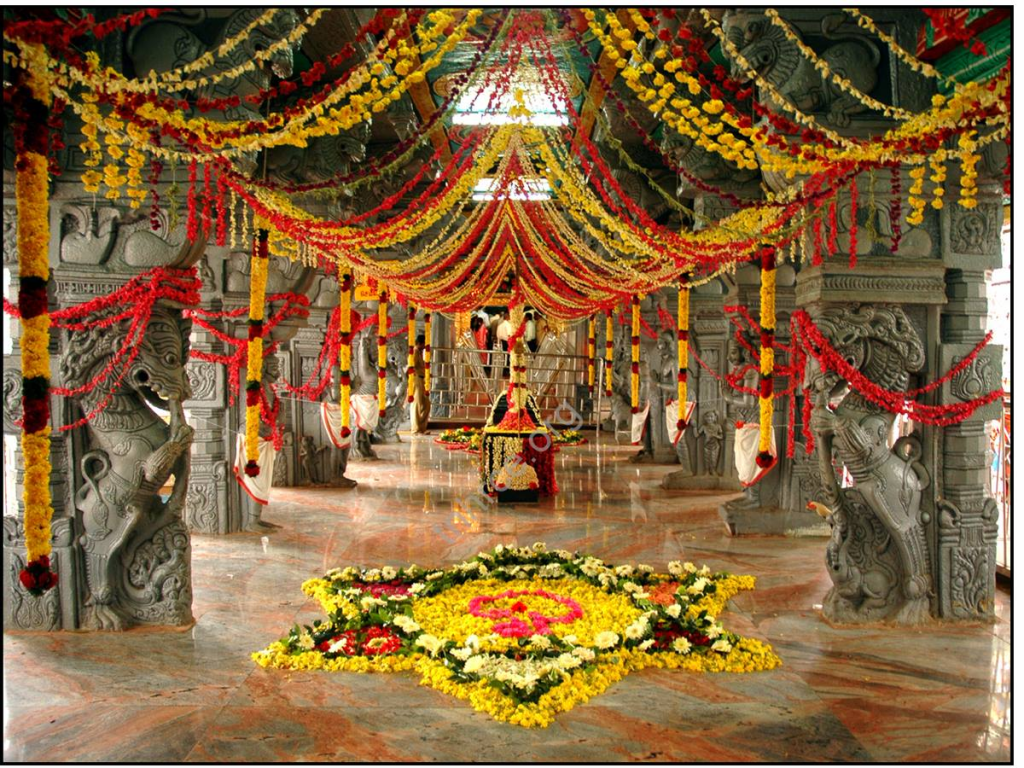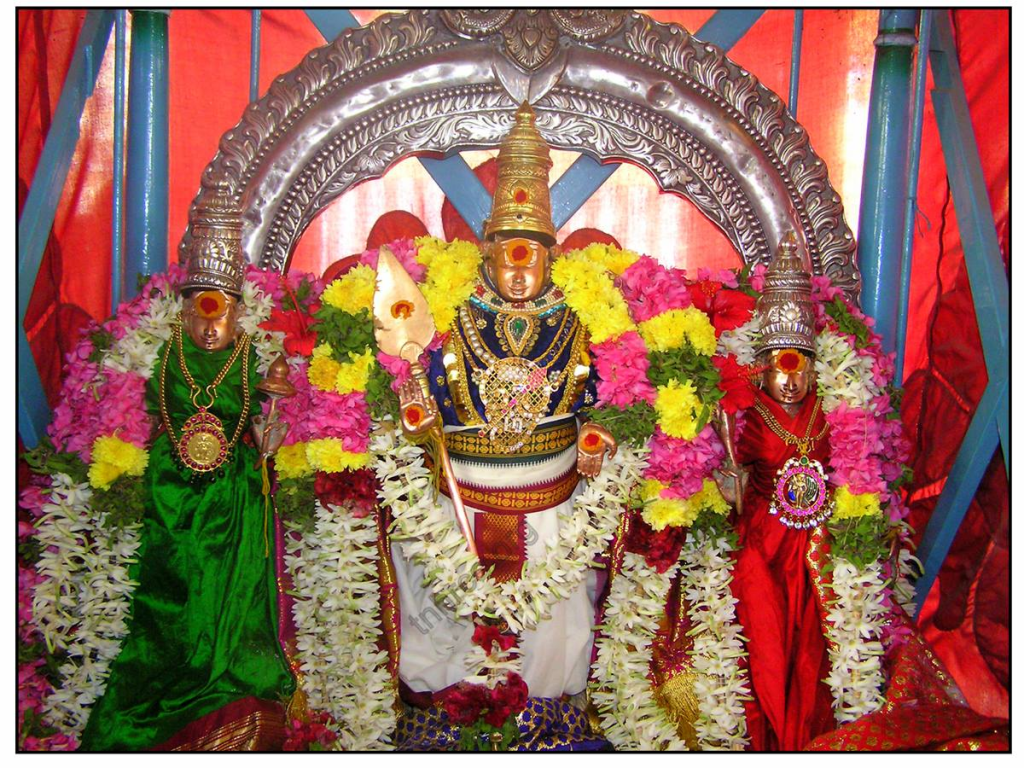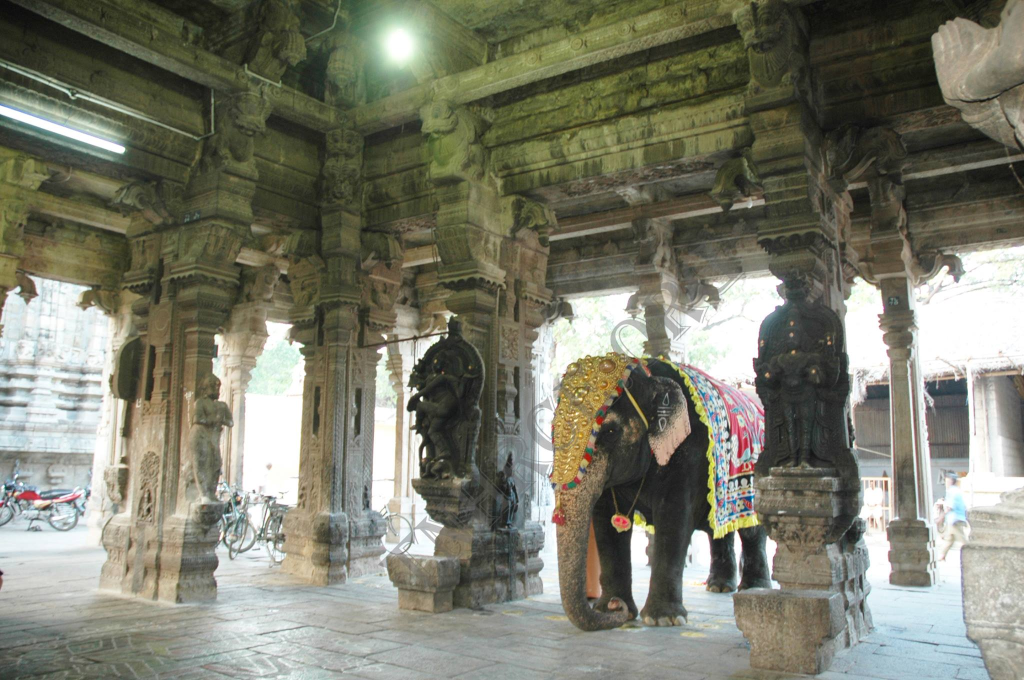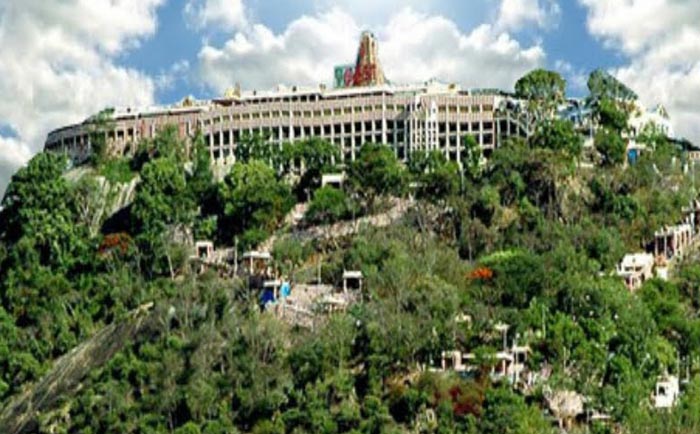ॐ श्री गुरुभ्यो नमः ॐ श्री शिवानन्दाय नमः ॐ श्री चिदानन्दाय नमः ॐ श्री दुर्गायै नमः
Source of all Images in this Blog-post : Google Images : ‘Google Image Search’ will reveal the multiple sources of every single image shared in this Blog. For more details, kindly see ‘Disclaimer‘
Palani in Tamilnadu is home to one of the most sacred shrines of Hindu God Muruga (Subramanya), as worshiped in the Hindu sect of Kaumaram.
The Thandayudhapani temple in Palani dedicated to Lord Murugan or Palani Andavar in Tamil is regarded as one of His Arupadai Veedu (Six Battle Camps).

The temple is situated atop a hill known as Sivagiri. The Garbagriham or Sanctum Sanctorum is surmounted by a gold Gopuram, and the walls of the Garbagriham have numerous stone inscriptions describing offerings made by devotees to the temple.

A temple is dedicated to Lord Murugan near the foot of the hill known as Thiru Avinan Kudi which actually forms a part of the six abodes of Muruga the Arupadaiveedu. It is also known as Kulandai Velayudhaswami Thirukkovil.

Besides this, right at the foot of the Sivagiri is a small shrine dedicated to Lord Ganapathi, locally known as Pada Vinayakar.
It is customary amongst the pilgrims to pay their obeisances at this shrine before commencing their ascent on the hill to reach the main temple.
Halfway up the hill, there is the shrine of Idumban where every pilgrim is expected to offer obeisance to Idumban before entering the temple of Dandayudhapani.
The age-old practice of Pilgrims to Palani bringing their offerings on their shoulders is known as Kavadi and is associated with the legend of Idumban.
Within the town there is another temple dedicated to Goddess Parvathi also as Periyanayaki Amman.

Near the Periya Nayaki Amman temple there are two other temples too – the Mariyamman temple and the Perumal temple.
The former is particularly resorted to in times of epidemics, the goddess there being regarded as the protector against illnesses.

A short distance from the town is another temple dedicated to Shiva where he is known by the name Periya Avudaiyar.

The Kannadi Perumal Temple, dedicated to Lord Vishnu is a small temple situated on a hillock 9 km south of Palani.
Arulmigu Dhandayuthapani Swami Temple is first of the Six Abodes of Murugan known as Aarupadai Veedugal in Tamil.
Palani temple is considered synonymous with Panchamritam – a sweet mixture made of five nectar-like ingredients.
Legend :
As per Hindu legendary beliefs, Sage Narada visited the celestial court of Shiva at Mount Kailash to present him with a fruit – the Gnana-Pazham meaning the fruit of knowledge.
He decided to award it to whichever of his two sons would first encircle the whole world thrice.
Accepting the challenge, Murugan (Karthikeya) started his journey around the globe on his vehicle peacock.
However, Ganesha, who surmised that the world was no more than his parents Shiva and Shakti combined, circumambulated His parents and won the fruit from Narada.
When Kartikeya returned, he was furious to learn that his efforts had been in vain. He left Kailash and took up his abode in the Palani hillsMurugan and chose to remain as a hermit in Palani.
He discarded all his royal robes and precious ornaments, and went into meditation for Self Realisation and Enlightenment.
The idol of the Muruga in Palani was created and consecrated by sage Bogar, one of Hinduism’s eighteen great Siddhars, out of an amalgam of nine poisonous herbs known as Navapashanam.
History :
The idol of the Muruga in Palani was created and consecrated by sage Bogar, one of Hinduism’s eighteen great Siddhas out of an amalgam of nine poisons or Navapashanam.
The legend also holds that the sculptor had to work extremely fast to complete its feature and to make it flawless and perfect.
A shrine to Bhogar also exists in the southwestern corridor of the temple.
This shrine by legend is said to be connected by a tunnel to a cave in the heart of the Pazhani hill where Bhogar continues to meditate and maintain his vigil even today with eight idols of Muruga.
Architecture :
The idol of the deity is said to be made of an amalgam of nine poisonous substances which forms an eternal medicine when mixed in a certain ratio.

It is placed upon a pedestal of stone with an archway framing it and represents Lord Subrahmanya in the form He assumed at Palani – that of a very young recluse – shorn of his locks and all his finery, dressed in no more than a loincloth and armed only with a staff – the Dhandam – as befits a monk.

The temple was re-consecrated by the Cheras, whose dominions lay to the west, and the guardian of whose eastern frontier was supposed to be the Kartikeya of Palani.
Housed in the Garbhagriham – the Sanctum Sanctorum of the temple – the deity may be approached and handled only by the temple’s priests, who are members of the Gurukkal community of Palani, and hold hereditary rights of sacerdotal worship at the temple.
Other devotees are permitted to come up to the Sanctum, while the priests’ assistants, normally of the Pandāram community, are allowed up to the ante-chamber of the Sanctum Sanctorum.
The temple is situated upon the higher of the two hills of Palani, known as the Sivagiri.
Traditionally, access to it was by the main staircase cut into the hill-side or by the Yanai-Padhai or elephant’s path, used by the ceremonial elephants.
Pilgrims bearing water for the ritual bathing of the idol, and the priests, would use another way also carved into the hill-side but on the opposite side.
Over the past half-century three funicular railway tracks have been laid up the hill for the convenience of the pilgrims, and supplemented by a rope-way within the past decade.
There are two modes of transport from the foothills to uphill. There is a winch which operate from 6 a.m. on ordinary days and from 4 a.m. during festive occasions.
There is another rope car which operates from 7 a.m. to 12:30 p.m. and 1:30 p.m. to 5 p.m. Both winch and the rope car are closed after the Irakkala Pooja at 8 p.m.
Kulandai Velayudhaswami Thirukkovil
The Sanctum of the temple is of early Chera architecture while the covered ambulatory that runs around it bears unmistakable traces of Pandya influence, especially in the form of the two fishes, the Pandyan royal insignia.
The walls of the Sanctum bear extensive inscriptions in ancient Tamil script.
Surmounting the Sanctum is a Gopuram of gold with numerous sculptures of the presiding deity Kartikeya and numerous gods and goddesses attending upon him.
In the first inner Prakāram or ambulatory around the heart of the temple are two minor shrines, one each to Shiva and Parvati, besides one to the sage Bhogar who is by legend credited with the creation and consecration of the chief idol in the temple.
In the second precinct, is a celebrated shrine of Ganapati, besides the carriage-house of the Muruga’s Golden Chariot.
Worship :
The most common form of worship at the temple is the Abhishekam – anointment of the idol with oils, sandalwood paste, milk, unguents and the like and then bathing it with water in an act of ritual purification.

The most prominent Abhishekams are conducted at the ceremonies to mark the hours of the day.
These Abhishekams are four in number – the Vizha Poojai, early in the morning, the Ucchikālam, in the afternoon, the Sāyarakshai, in the evening and the Rakkālam, at night, immediately prior to the temple being closed for the day.
These hours are marked by the tolling of the heavy bell on the hill to rouse the attention of all devotees to the worship of the Lord being carried out at that hour.
On a quiet day the bell can be heard in all the countryside around the town of Palani.
In addition to worship within the precincts of the temple, an idol of the Lord called the Uthsavamoorthy is also carried around the temple in a golden chariot drawn by the devotees most evenings in a year.
As of 2016, the temple was the richest among temples in the state with a collection of 33 crore during the period of July 2015 to June 2016.
Religious practices :
One of the main traditions of the temple, is the tonsuring of devotees, who vow to discard their hair in imitation of the Lord of Palani.
Another is the anointing of the head of the presiding deity’s idol with sandalwood paste, at night, prior to the temple being closed for the day.

The paste, upon being allowed to stay overnight, is said to acquire medicinal properties, and is much sought after and distributed to devotees, as Rakkāla Chandaṇam.
Traditionally, the hill-temple of Palani is supposed to be closed in the afternoon and rather early in the evening to permit the deity to have adequate sleep, being but a child, and therefore, easily tired by the throngs of devotees and their constant importunations.
A tradition that is not very well known is that of the Paḷḷi-Arai or bedroom wherein each night the Lord is informed of the status of the temple’s accounts for the day by the custodians of the temple, and then put to sleep to the singing of an Odhuvār or bard.
Devotees carry Kavadi – an ornamental mount – decked with flowers, glazed paper and tinsel work and wearing ochre clothes themselves on foot from long distances is a commonly followed worship practice.
Panchamritham (mixture of five) is believed to be a divine mixture prepared by Vinayagar at the end of the divine encounter. He mixed honey, dates, banana, raisins and jaggery and distributed it to Shiva Karthikeya.
The practice is followed in modern times where the devotees are provided with Panchamritham as Prasadam.
Festivals and Religious Practices :
Besides regular services, days sacred to Lord Subrahmanya are celebrated with great pomp and splendour every year. These auspicious celebrations are attended by thousands of devotees from all over South India.

Some of these festivals are Thai-Poosam, Panguni-Uththiram, Vaikashi-Vishakham and Soora-Samharam.
Thai-Poosam, which is considered by far the most important festival at Palani, is celebrated on the full moon day of the Tamil month of Thai (15 January-15 February).

Pilgrims after first having taken a strict vow of abstinence, come barefoot, by walk, from distant towns and villages.
Many pilgrims also bring a litter of wood, called Kāvadi, borne on their shoulders, in commemoration of the act of the demon Hidumba.

Hidumba is credited by Hindu legends with bringing the two hills of Palani to their present location, slung upon his shoulders.
Others bring pots of sanctified water, known as Theertha-Kavadi, for the priests to conduct the Abhishekam on the holy day.
Traditionally, the most honoured of the pilgrims, whose arrival is awaited with anticipation by all and sundry, are the people of Karaikudi, who bring with them the diamond-encrusted Vel or javelin of the Lord from His temple at Karaikudi.
See Wikipedia Page of the temple for more information
